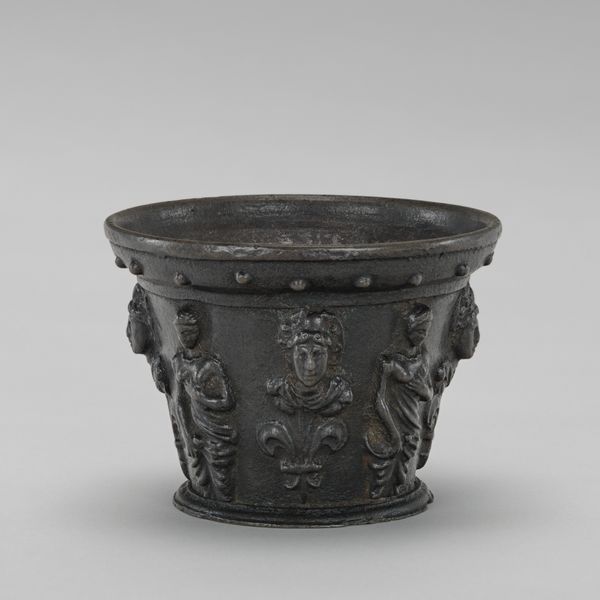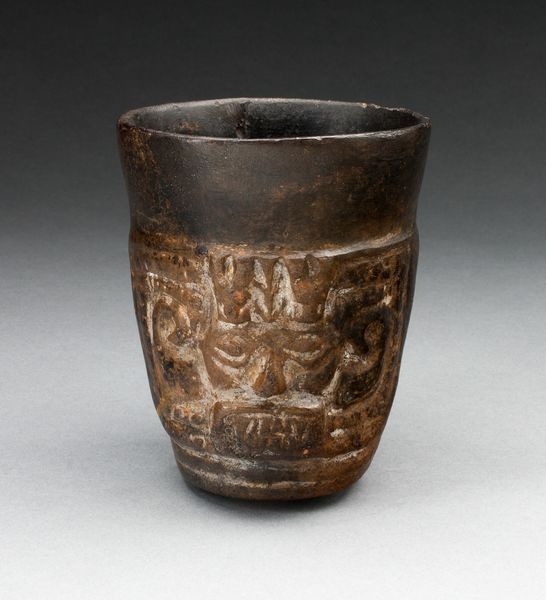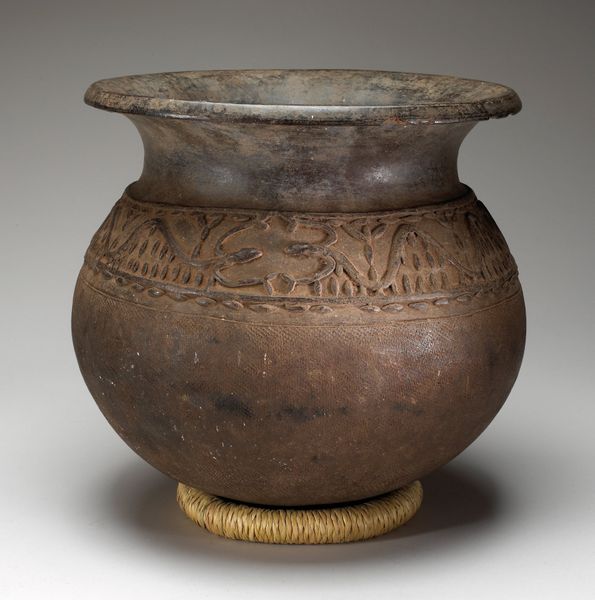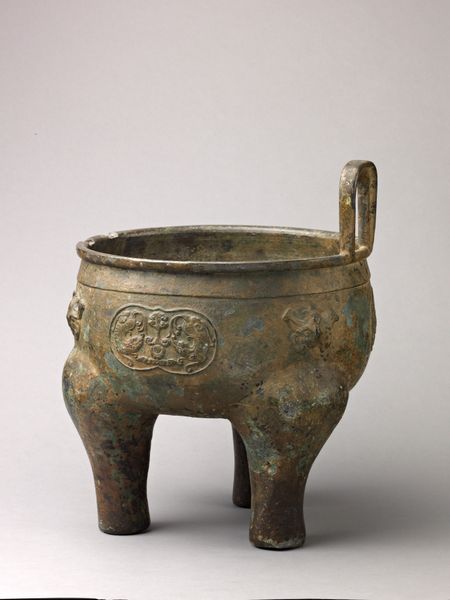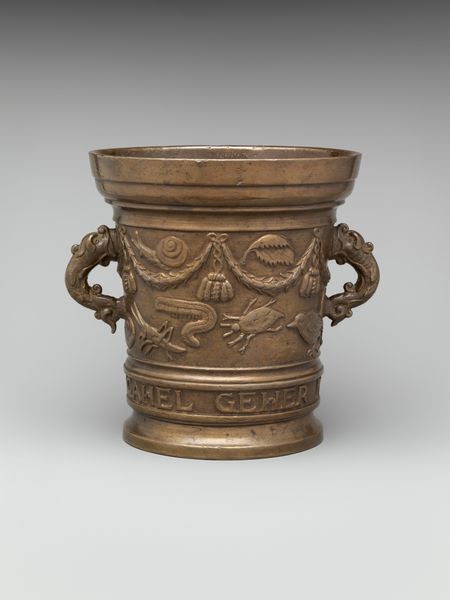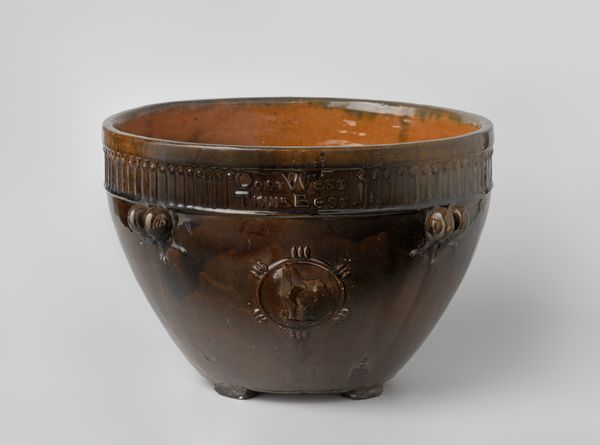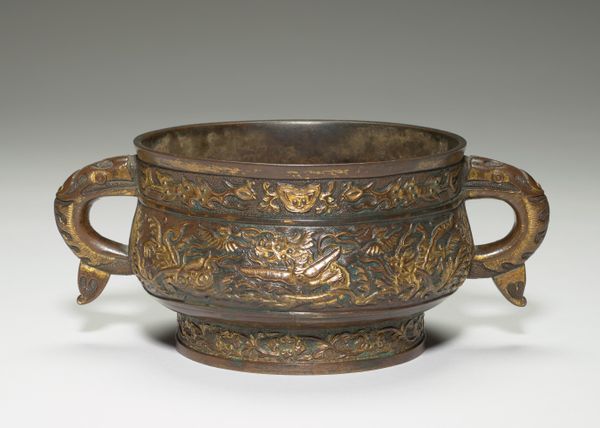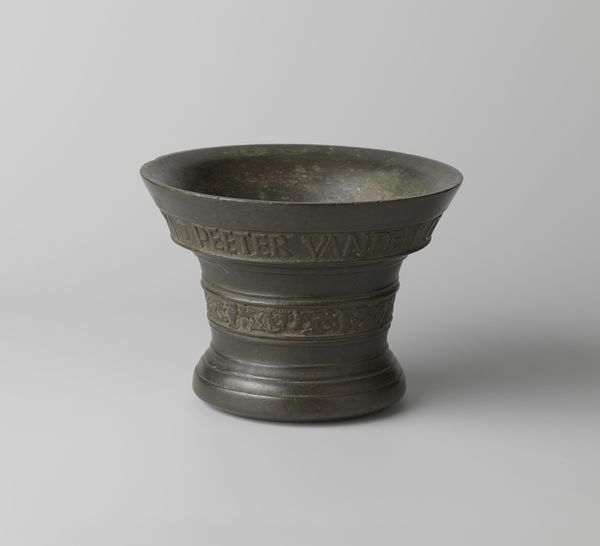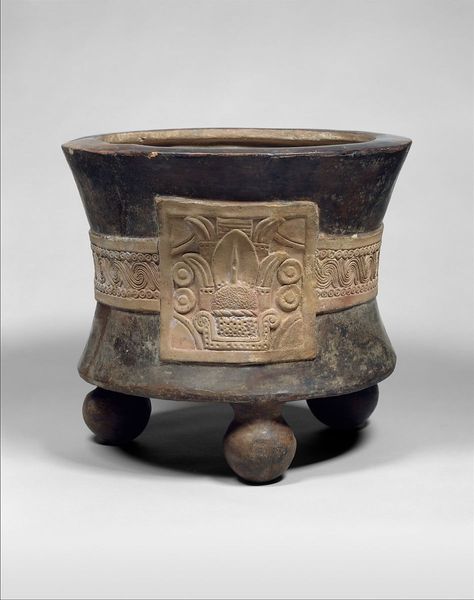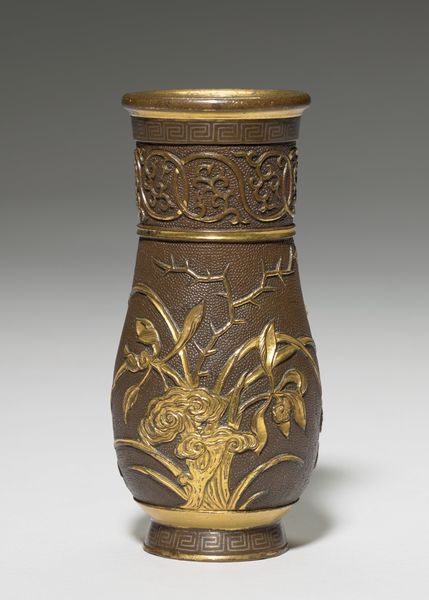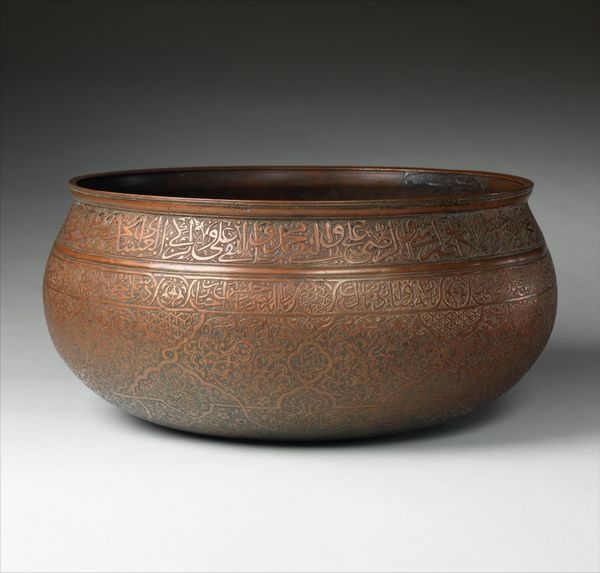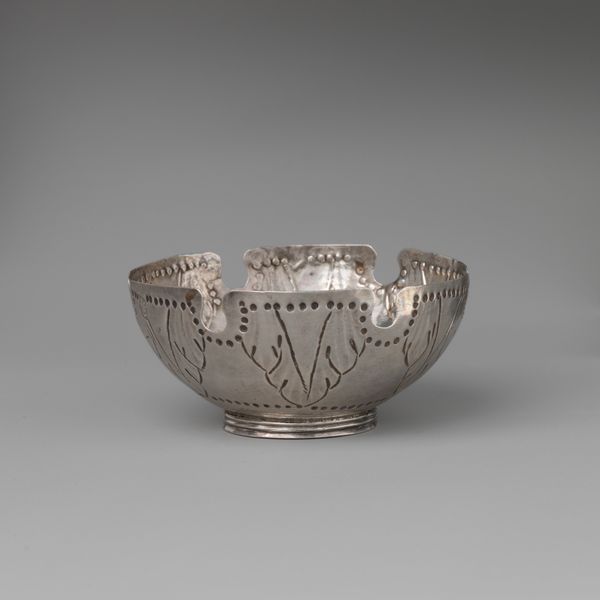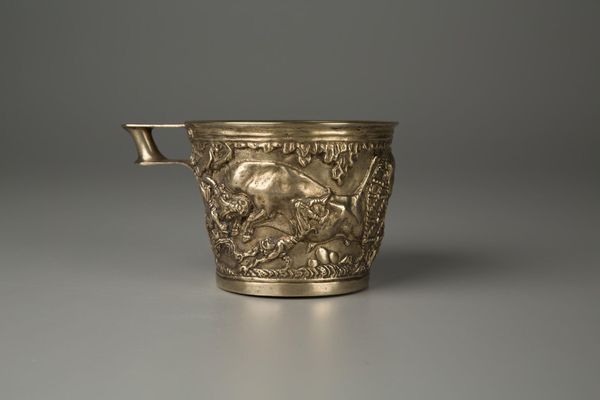
bronze, sculpture
#
bronze
#
mannerism
#
11_renaissance
#
sculpture
#
decorative-art
Dimensions: diameter at rim, wt. confirmed: 4 15/16 × 6 1/2 in., 51.142oz. (12.5 × 16.5 cm, 1450g)
Copyright: Public Domain
This mortar was made in sixteenth-century Nuremberg by Wenzel Jamnitzer, a goldsmith and printmaker of the German Renaissance. The scenes cast in bronze around the outside of the mortar are alive with figures drawn from classical mythology, amidst naturalistic plants. Nuremberg during this period was not only a center of artistic innovation, but also a place of burgeoning capitalism and manufacturing. While the classical figures represent an interest in Humanist ideals, it’s important to consider the status of this object as a functional item in the preparation of food or medicine. Who would have had access to such a finely crafted object? This mortar speaks to both the era’s fascination with the classical world and a growing divide in social status. It urges us to reflect on who could afford beauty and luxury, and who was tasked with the labor of production and preparation.
Comments
No comments
Be the first to comment and join the conversation on the ultimate creative platform.
